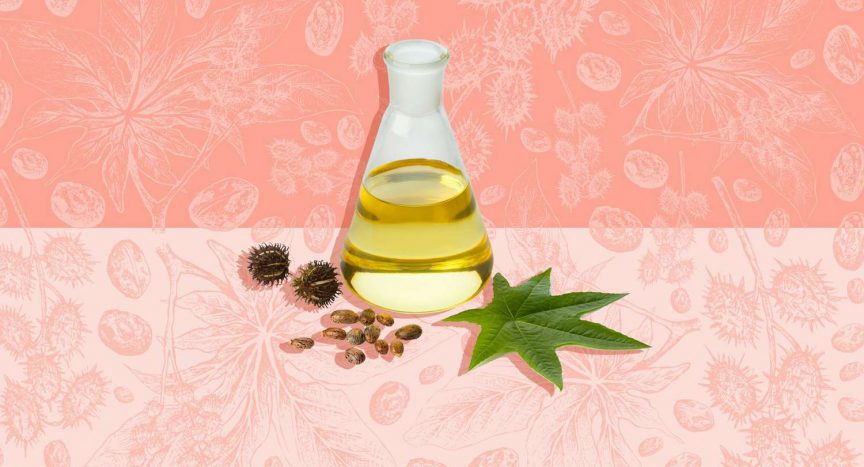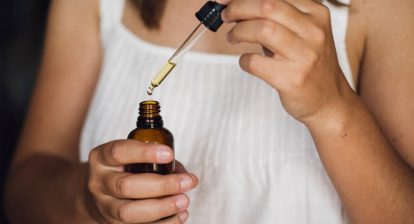The wellness community is no stranger to big-name oils like coconut, sunflower, and even grapeseed, but castor oil is one of those underdog ingredients that hasn’t gotten as much hype, despite the many ways it can benefit your hair, skin, and nails.
“Castor oil is extracted from the castor bean, which is the seed of the Ricinus communis plant,” said Dr. Sheel Desai Solomon, a board-certified dermatologist and founder of Preston Dermatology in Raleigh, North Carolina. “Though the plant is technically native to tropical Eastern Africa, it’s managed to journey around the world and can be found in the southeastern region of the United States.”
According to Solomon, castor oil is rich in omega-6, omega-9, and vitamin E, which means it’s a nourishing and hydrating ingredient. Castor oil also has anti-inflammatory and antibacterial properties thanks to its high ricinoleic acid content. All of this makes it a well-rounded beauty oil with many topical uses. Read on to explore the 8 different ways castor oil can be used in your beauty routine.
- Dr. Sheel Desai Solomon is a board-certified dermatologist and founder of Preston Dermatology in Raleigh, North Carolina.
- Dr. Deanne Robinson is a board-certified dermatologist based in Westport, Connecticut.
Improve Your Hair Quality (but Not Growth)
There’s a myth floating around the internet that castor oil can make your hair grow, but there’s no actual science to back up those claims. “The primary castor oil benefit for hair is that it helps to create luster, which was demonstrated in a 2003 study,” said Dr. Deanne Robinson, a board-certified dermatologist based in Westport, Connecticut. “While people claim evidence for hair growth [via anecdotes], there are no actual supporting studies.”
Solomon seconds that statement and adds, “While I can’t say that it would hurt your hair growth effort, it is not scientifically proven to be an effective way to stimulate your follicles.”
You can, however, apply castor oil directly to your hair at the ends to help seal the cuticle and nix the appearance of dry, split ends. You can also apply it throughout your hair to tame frizz and improve hair sheen. Just a tiny amount is all you need, and you can apply it to either wet or dry hair.
Nix Dandruff and Moisturize Your Scalp
Because castor oil is so moisturizing, and because of its anti-inflammatory properties, it can also be used as an inexpensive scalp treatment. “Massaging it into your scalp can help keep the area hydrated and also helps with dandruff, rashes, and irritation,” said Solomon. “In that sense, castor oil is helpful to your hair regimen.”
Pair castor oil with a scalp massager for an extra luxurious experience.
Moisturize Anywhere on Your Body
Whether you’re battling cracked heels, post-shave dryness, or flaky parched skin on your arms, legs, neck, lips, or abdomen, castor oil can double as a rich, get-hydrated-quick moisturizer. It’s a humectant, which means that it attracts moisture wherever it’s applied. This leaves skin hydrated, balanced, and soft to the touch.
Soften Your Cuticles
“Castor oil is a great alternative to lather on your cuticles to prevent dryness, peeling, and ripping,” Solomon said. She especially recommends applying it directly after getting a manicure or pedicure. You can also apply castor oil to your cuticles before bedtime to nourish your cuticles while you sleep. Because castor oil is an anti-inflammatory and antibacterial, it can also help keep infection away from ripped cuticles.
Keep a tiny vial of castor oil next to your desk or in your purse for a little cuticle hydration throughout the day.
Soothe Sunburned Skin
Though aloe gets a lot of attention when it comes to sunburn soothing treatments (which it deserves), castor oil is another effective ingredient you can try if Ms. Sunshine gets the best of you. When castor oil is applied directly to sunburned skin, you’ll experience a slight cooling sensation that quickly soothes that awful prickly pain. Meanwhile, ricinoleic acid can help reduce further inflammation.
Heal Wounds, Inflammation, and Rashes
In the same way that castor oil can soothe your skin after getting a little too much sun, you can also use it on small wounds, rashes, and other inflamed areas of skin to reduce swelling, redness, itchiness, and pain. Needless to say, if you’re dealing with an ongoing issue, severe pain, or large wounds, a trip to the doctor should be your priority.
Combat Acne
Acne treatment is a little-known castor oil use. Thanks to its antibacterial and anti-inflammatory properties, you can spot-treat pimples, blackheads, and whiteheads, or you can apply a thin layer to your face as a moisturizer and acne-fighting treatment. (If you’re looking to reduce signs of aging, check out our list of the best anti-aging face oils.)
Our dermatologists recommend doing a spot test in a discreet spot—behind your ear or under your chin is perfect—and waiting a day to see how your skin reacts before applying it to the rest of your face.
Reduce the Appearance of Stretch Marks
Castor oil’s hydration qualities can help in reducing the appearance of stretch marks. Stretch marks are often caused by rapid weight gain or loss, rapid muscle growth, or pregnancy (among other reasons).
To use castor oil to help with your stretch marks, pour a generous amount of the oil into your hands and gently massage it into your stretch marks. Do this twice daily, in the morning and night for best results. The fading process can be slow, so be patient with your body.





